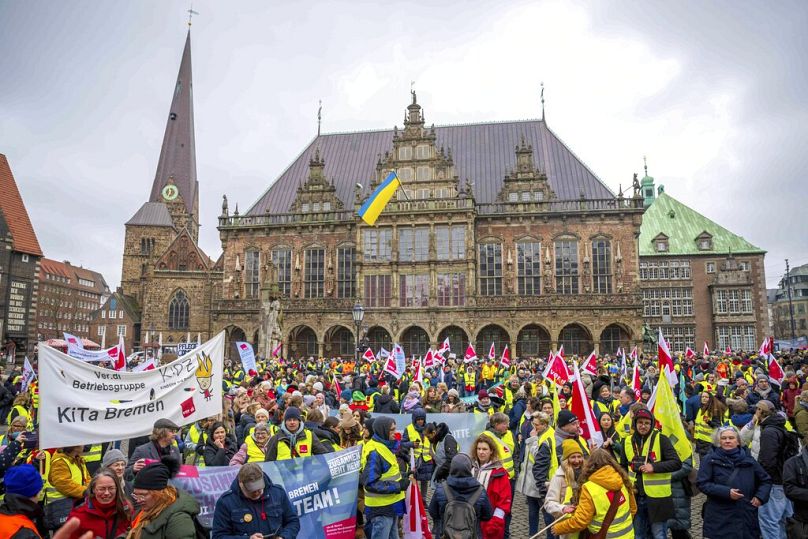The International Labour Organization warns that global unemployment may increase in 2024, alongside persisting inflation and economic woes in G20 states.
Unemployment and job gap rates have dipped below pre-pandemic levels, according to a new report by the International Labour Organization (ILO).
The job gap rate refers to the number of people without jobs who are actively seeking employment.
According to the ILO report, entitled World Employment and Social Outlook Trends: 2024 (WESO Trends), global unemployment decreased from 5.3% to 5.1% in 2023.
The figures come after the EU's statistical office published similar results for the eurozone yesterday. There, the unemployment rate dropped to 6.4% in November 2023, down from 6.5% the previous month and 6.7% the prior year.
However, the ILO study projects that approximately two million more individuals will seek jobs this year, potentially raising the global unemployment rate from 5.1% in 2023 to 5.2%.
The report emphasises that living standards might not improve due to inflation and reduced incomes in most G20 countries, where improvements in quality of life aren't expected to happen swiftly.
"Falling living standards and weak productivity combined with persistent inflation create the conditions for greater inequality and undermine efforts to achieve social justice," said ILO Director-General Gilbert Houngbo. "And without greater social justice we will never have a sustainable recovery."
Houngbo also emphasised that the "imbalances" are not just a temporary aspect of pandemic recovery but rather "structural".
The ILO observed notable differences between high-income and low-income countries. Last year, high-income countries had an 8.2% job gap rate, much lower than the 20.5% in low-income countries. Unemployment stayed at 4.5% in high-income nations, while it was 5.7% in low-income countries.
Working poverty is also expected to persist. Employers facing extreme poverty (<€1.97 per person per day in purchasing power parity [PPP] terms) increased by around one million in 2023. The number facing moderate poverty (<€3.34 per day per person in PPP terms) rose by 8.4 million in the same year.
Income inequality has also widened, the WESO Trends report warns, noting that the erosion of real disposable income "bodes ill for aggregate demand and a more sustained economic recovery".
Rates of informal work are expected to remain the same, accounting for around 58% of the global workforce in 2024.
Gender gap and age disparities persist despite improvements
After the pandemic, women's involvement in the workforce has quickly improved, yet a noticeable gender gap persists, especially in emerging nations.
Challenges remain with youth unemployment too. The number of young women in the NEET group (Not in Employment, Education or Training) remains high, which poses obstacles to their future job opportunities.
The report also found that people rejoining the labour market post-pandemic work fewer hours than before, and there has been a significant rise in sick days taken.
The skills gap and sluggish productivity
After a short increase following the pandemic, productivity has reverted to the past decade's low levels. One of the reasons for this is the significant allocation of investment into less productive sectors such as services and construction, according to the study.
Skills shortages and the control exerted by major digital monopolies are another drag on the adoption of technology, particularly in developing nations and industries dominated by less productive firms.
"The workforce challenges [...] pose a threat to both individual livelihoods and businesses and it is essential that we tackle them effectively and fast," Houngbo said.




















